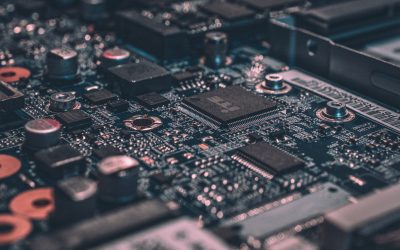As we approach 2025, the cybersecurity landscape is rapidly evolving, influenced by emerging technologies, increasing digital threats, and regulatory changes. Organizations of all sizes are recognizing the importance of robust cybersecurity measures to protect sensitive data and maintain customer trust. In this article, we’ll explore the top five cybersecurity trends for 2025, providing insights into how these developments will shape the future of digital security.
Table of Contents
- Introduction
- Trend 1: AI and Machine Learning in Cybersecurity
- Trend 2: The Rise of Zero Trust Architecture
- Trend 3: Enhanced Privacy Regulations
- Trend 4: Cloud Security Evolution
- Trend 5: Cybersecurity Skills Gap
- Conclusion
1. Introduction
As cyber threats become increasingly sophisticated, organizations are compelled to adapt their security strategies. Cybersecurity is not just an IT issue; it’s a critical business concern that affects every aspect of an organization. In 2025, we can expect to see significant shifts in how businesses approach cybersecurity, influenced by technological advancements, regulatory requirements, and changing threat landscapes.
Why It Matters
Understanding these trends is crucial for businesses to stay ahead of potential threats. By anticipating changes in the cybersecurity environment, organizations can better prepare themselves, mitigate risks, and safeguard their digital assets.
2. Trend 1: AI and Machine Learning in Cybersecurity
The Role of AI
Artificial Intelligence (AI) and Machine Learning (ML) are transforming the cybersecurity landscape. In 2025, AI will play a pivotal role in threat detection and response, offering organizations the ability to analyze vast amounts of data in real-time. Machine learning algorithms can identify patterns and anomalies, enabling quicker responses to potential threats.
Predictive Threat Intelligence
One of the most significant advancements will be in predictive threat intelligence. By analyzing historical data and current trends, AI systems can predict potential attacks before they occur, allowing organizations to bolster their defenses proactively.
Automating Responses
Automation will also be a key feature of AI in cybersecurity. Automated responses can mitigate threats without human intervention, reducing response times and minimizing damage. For example, if a network anomaly is detected, AI can isolate affected systems automatically.
Enhanced Phishing Detection
Phishing attacks are expected to evolve, becoming more sophisticated and harder to detect. AI-driven solutions will significantly enhance phishing detection by analyzing email content, sender behavior, and contextual information, making it easier for organizations to identify and block malicious emails.
Conclusion
The integration of AI and ML in cybersecurity will not only streamline threat detection and response but also empower organizations to take a more proactive stance against cyber threats.
3. Trend 2: The Rise of Zero Trust Architecture
Understanding Zero Trust
Zero Trust Architecture (ZTA) is gaining traction as organizations realize that traditional security models, which rely on perimeter defenses, are no longer sufficient. The principle behind ZTA is simple: “Never trust, always verify.” This approach requires strict identity verification for every person and device trying to access resources on a network.
Implementing Zero Trust
In 2025, we expect to see a widespread implementation of Zero Trust models. Organizations will focus on:
- User Identity Verification: Multi-factor authentication (MFA) will become standard practice.
- Least Privilege Access: Employees will have access only to the resources necessary for their roles.
- Micro-segmentation: Networks will be divided into smaller, isolated segments to limit lateral movement of threats.
Benefits of Zero Trust
Adopting a Zero Trust model will enhance security posture, reduce the attack surface, and improve incident response times. It also aligns with the shift toward remote work, ensuring that access controls remain stringent regardless of the user’s location.
Conclusion
The rise of Zero Trust Architecture represents a fundamental shift in how organizations approach cybersecurity, making it a critical trend to watch in 2025.
4. Trend 3: Enhanced Privacy Regulations
Regulatory Landscape Changes
As data breaches continue to make headlines, governments worldwide are enacting stricter privacy regulations. In 2025, we expect to see enhanced privacy laws, similar to the GDPR in Europe, impacting how organizations collect, store, and manage personal data.
Key Regulations to Watch
- Global Data Protection Regulation (GDPR) Updates: As the GDPR matures, expect more stringent enforcement and potential amendments to address new technological challenges.
- California Consumer Privacy Act (CCPA): The CCPA will likely inspire similar legislation in other states and countries, emphasizing consumer rights over personal data.
- Health Data Regulations: As telehealth becomes more common, regulations governing health data privacy will tighten, impacting healthcare organizations significantly.
Implications for Businesses
Organizations will need to invest in compliance strategies, data protection technologies, and employee training. Failure to comply with privacy regulations can result in significant fines and damage to reputation, making adherence a top priority.
Conclusion
Enhanced privacy regulations will shape the cybersecurity landscape, requiring organizations to prioritize data protection and compliance strategies as they prepare for 2025.
5. Trend 4: Cloud Security Evolution
The Cloud Computing Boom
The shift to cloud computing has accelerated in recent years, and this trend will continue into 2025. As organizations increasingly rely on cloud services for data storage and application hosting, cloud security will become a paramount concern.
Emerging Cloud Security Practices
- Cloud Security Posture Management (CSPM): CSPM tools will help organizations continuously monitor their cloud environments for misconfigurations and vulnerabilities.
- Cloud Workload Protection Platforms (CWPP): These platforms will offer comprehensive security for workloads running in cloud environments, ensuring that applications and data remain secure.
- Serverless Security: As serverless computing becomes more prevalent, security solutions will need to evolve to protect these environments from unique vulnerabilities.
Shared Responsibility Model
Understanding the shared responsibility model will be crucial. While cloud service providers (CSPs) offer robust security measures, organizations are responsible for securing their data and applications within the cloud. This partnership will necessitate a clear understanding of roles and responsibilities.
Conclusion
As cloud adoption continues to rise, evolving cloud security practices will be essential for organizations to protect their data and maintain compliance in 2025.
6. Trend 5: Cybersecurity Skills Gap
The Growing Skills Shortage
Despite the increasing demand for cybersecurity professionals, there remains a significant skills gap in the industry. In 2025, this gap is expected to widen as organizations struggle to find qualified candidates to fill crucial cybersecurity roles.
Factors Contributing to the Skills Gap
- Rapid Technological Change: The fast-paced evolution of technology requires continuous learning and adaptation, which can be daunting for many professionals.
- Increasing Cyber Threats: As cyber threats become more sophisticated, the need for specialized skills in areas like threat intelligence and incident response will grow.
- Lack of Training Opportunities: Many educational institutions are not keeping pace with the changing cybersecurity landscape, resulting in a workforce that is not adequately prepared for the demands of the industry.
Addressing the Skills Gap
Organizations will need to adopt innovative strategies to bridge the skills gap, including:
- Investing in Employee Training: Continuous professional development and upskilling will be vital.
- Collaboration with Educational Institutions: Partnerships with universities and colleges can help align curricula with industry needs.
- Encouraging Diversity: Expanding recruitment efforts to include diverse talent pools can help address the skills shortage.
Conclusion
Addressing the cybersecurity skills gap will be crucial for organizations as they navigate the complex landscape of cyber threats in 2025.
7. Conclusion
As we look toward 2025, understanding the evolving trends in cybersecurity is essential for organizations aiming to protect their digital assets. From the integration of AI and machine learning to the adoption of Zero Trust architecture, each trend presents both challenges and opportunities. By staying informed and proactive, organizations can build a robust cybersecurity strategy that not only safeguards their data but also ensures compliance with regulatory requirements and addresses the skills gap in the industry.
The future of cybersecurity will undoubtedly be complex, but with the right strategies in place, organizations can thrive in an increasingly digital world.




0 Comments